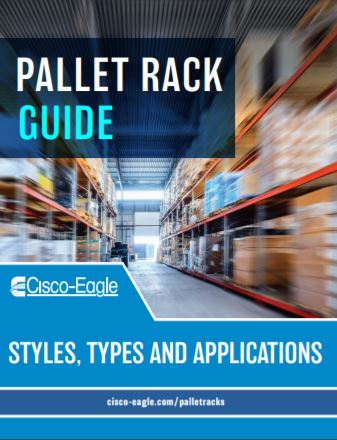Selectivity vs. Storage Density: Choosing the Right Pallet Rack for Your Application
The balance between picking availability and space constraints
Ask Us!What rack style fits your needs the best?
That depends on what you're storing, how much you're storing, and how often you want to access it.
Selective rack

Maximum selectivity, reduced storage density
Selective pallet rack is the most versatile choice. It provides 100% access to every pallet position. You can have as many SKU's as you have pallet positions. You can change the storage mix simply by putting pallets into positions. You always access every pallet. However, selective rack requires aisles and stores the fewest pallets in the same space compared to other alternatives. Selective racks are best for faster moving products and maximum access.

Double-deep racks: A variant of selective racks are double-deep systems, which store one SKU in each storage position, offering good selectivity and double storage density. They are nearly as selective as single-depth selective racks, but offer twice the density for a single SKU in one bay. Double deep pallet racks require reach forklifts to store and pick pallets.
Drive-In Rack - Drive-Through Racks

Extremely dense storage, limited selectivity
These systems store pallets two, three, or more deep for greater storage density than selective racks, but less selectivity. They are "last-in, first-out" systems ideal for items that have longer life in storage, and don't require immediate access. Each lane at each level can store a single SKU. These racks are frequently deployed in freezer or cooler applications where space is scarce and expensive.
Shoptalk Video: Pushback vs Drive-in Pallet Racks
Push Back Rack

Excellent first-in, last-out storage density for single-lane SKUs
Forklifts place pallets on the rack system on nested carts riding on inclined rails at the front face of the rack. Each pallet is then pushed back by subsequent pallet loading, exposing the next cart. This is a last-in, first-out storage media. You can place a different SKU on every level and pick face. However, pushback systems require angled pitch, which pushes pallets to the front once one is removed. This angle consumes vertical space.
These racks aren't as high-density as drive-in racks, but offer better selectivity. They also reduce loading/unloading time since forklifts do not need to enter the rack structure to pick or place pallets. This also makes them safer than drive-in systems. When you need more selectivity than drive-in systems allows, and more storage density is needed than selective racks, pushback is ideal.
Pallet Flow Racks

First-in, first-out inventory rotation for fast moving items and excellent storage density
Pallet flow rack systems have unsurpassed storage density . They are limited only by the size of your facility. Flow storage systems offer automatic "first-in, first-out" product rotation, an advantage with perishable and time-sensitive products. The first pallet stored flows to the front of the rack system, replacing the ones in front of it as they are picked and used.
Other factors for rack selection
Other factors, such as rack type (structural, tubular, boltless, open back, etc.) may play into your final decision. You can also increase storage density and retain some flexibility with other methods, including AS/RS unit load systems and other methods to take fully advantage of your space. Contact us today for expert help with your rack system.




